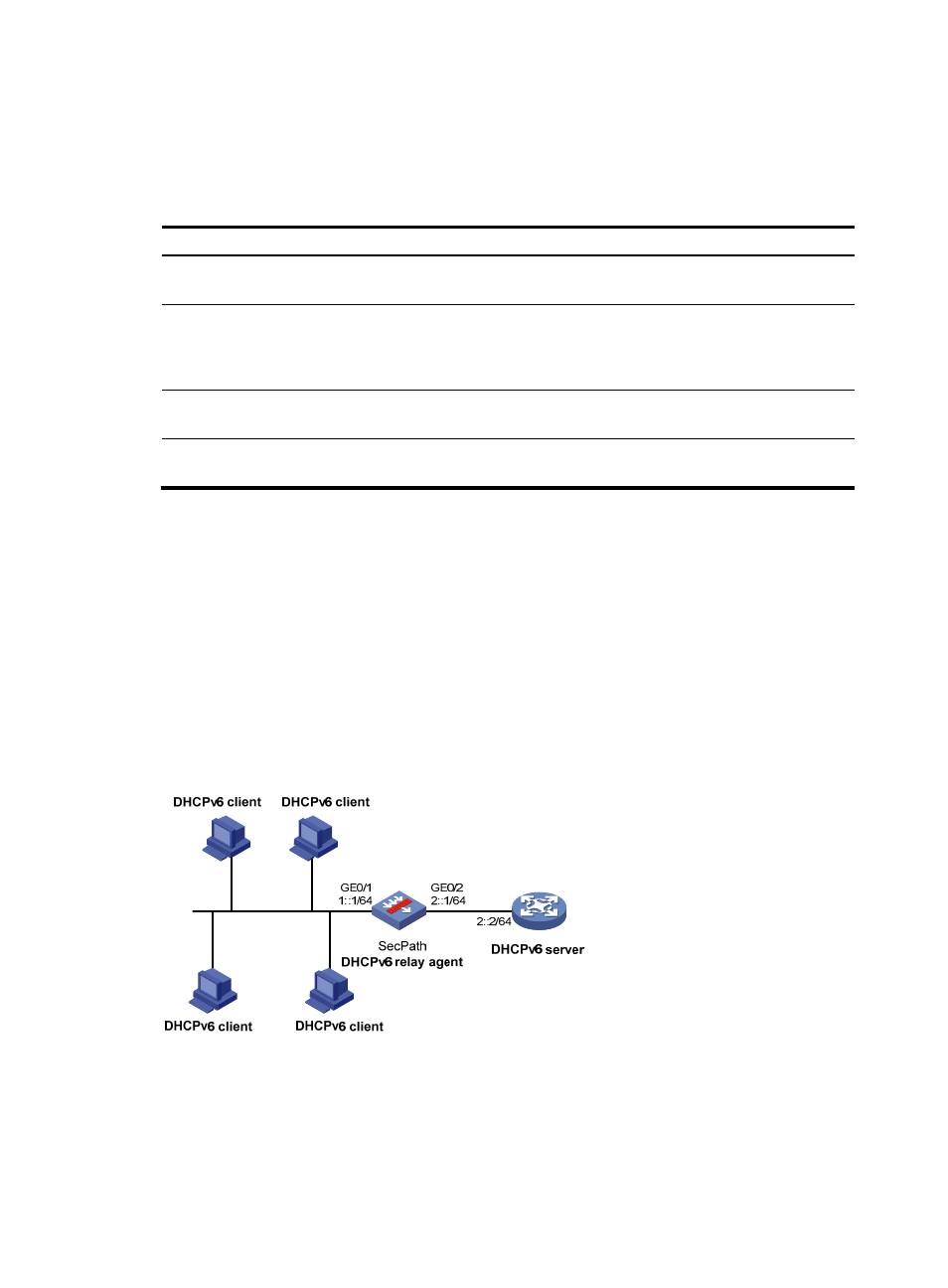Displaying and maintaining the dhcpv6 relay agent, Dhcpv6 relay agent configuration example, Network requirements – H3C Technologies H3C SecPath F1000-E User Manual
Page 746: Configuring the secpath as a dhcpv6 relay agent

721
Displaying and maintaining the DHCPv6 relay
agent
Task Command
Remarks
Display the DUID of the local
device.
display ipv6 dhcp duid [ | { begin |
exclude | include } regular-expression ]
Available in any view
Display DHCPv6 server addresses
specified on the DHCPv6 relay
agent.
display ipv6 dhcp relay server-address { all
| interface interface-type
interface-number } [ | { begin | exclude |
include } regular-expression ]
Available in any view
Display packet statistics on the
DHCPv6 relay agent.
display ipv6 dhcp relay statistics [ | { begin
| exclude | include } regular-expression ]
Available in any view
Clear packets statistics on the
DHCPv6 relay agent.
reset ipv6 dhcp relay statistics
Available in user view
DHCPv6 relay agent configuration example
Network requirements
As shown in
, DHCPv6 clients reside in network 1::/64, and the IPv6 address of the DHCPv6
server is 2::2/64. The DHCPv6 client and server need to communicate via a DHCPv6 relay agent
(SecPath).
The SecPath acts as the gateway of network 1::/64. It sends RA messages to notify the hosts to obtain
IPv6 addresses and other configuration parameters through DHCPv6. For more information about RA
messages, see "Configuring IPv6 basics."
Figure 371 Network diagram
Configuring the SecPath as a DHCPv6 relay agent
# Enable IPv6.
<SecPath> system-view
[SecPath] ipv6